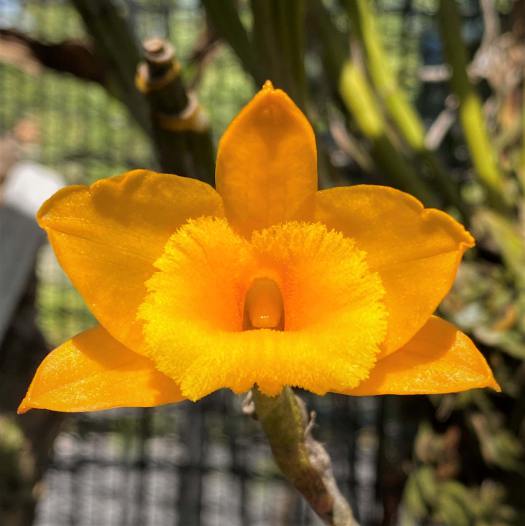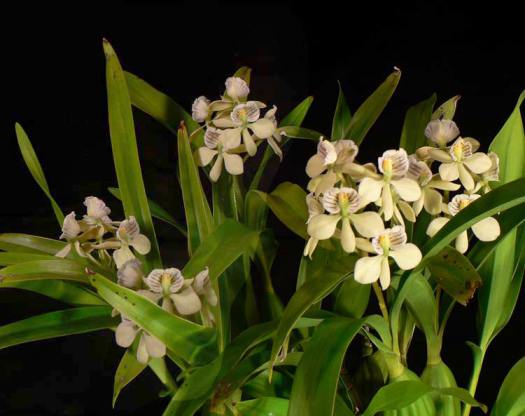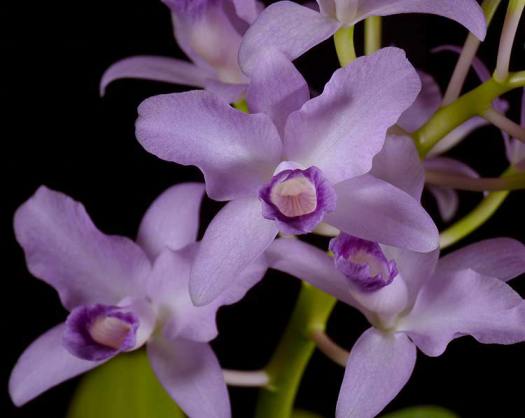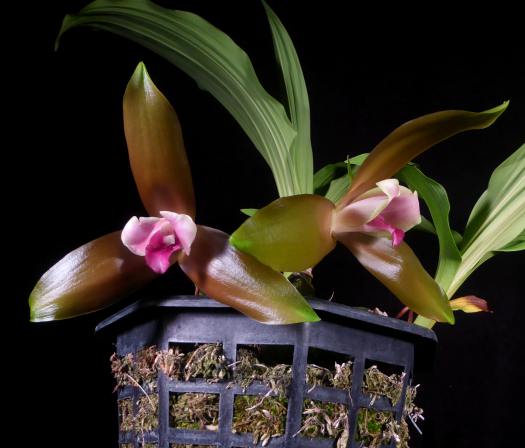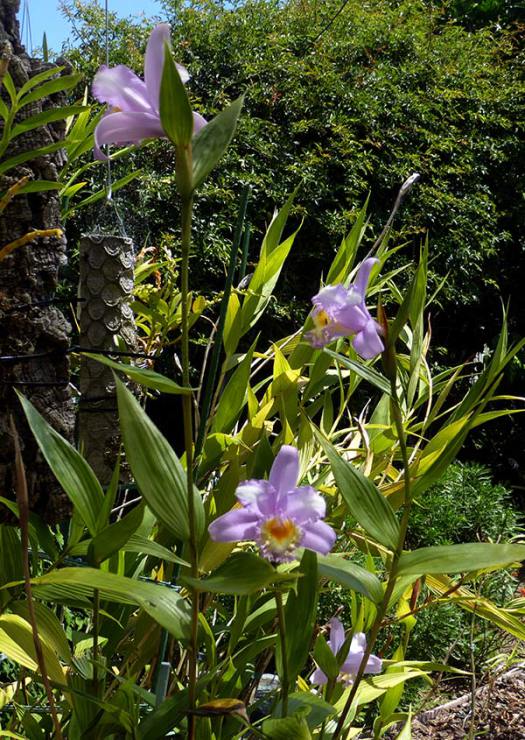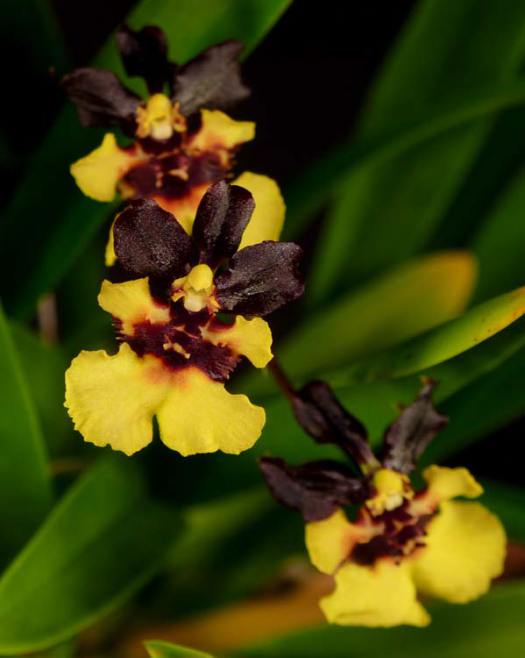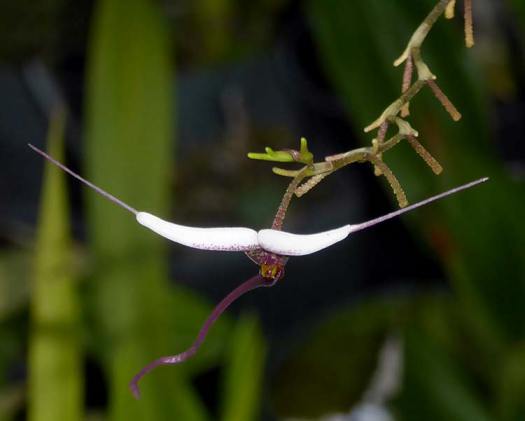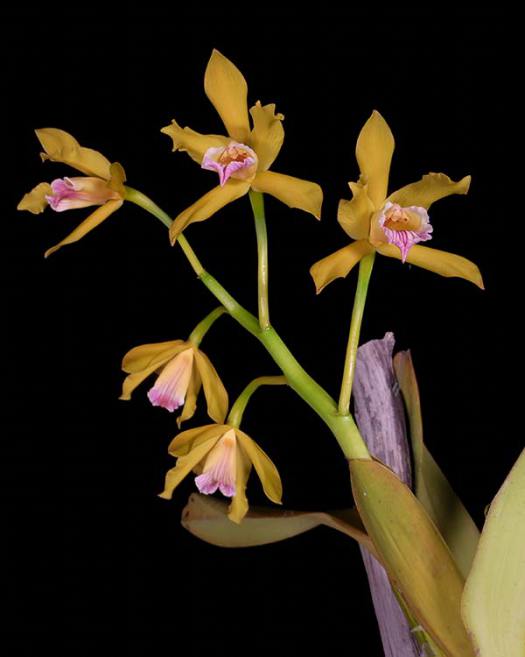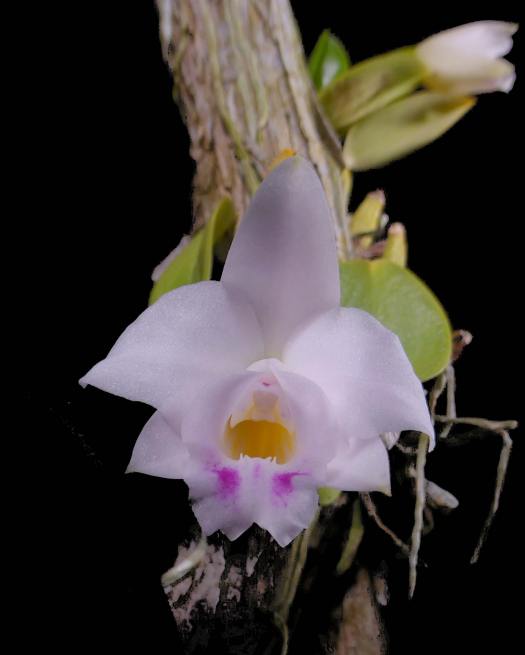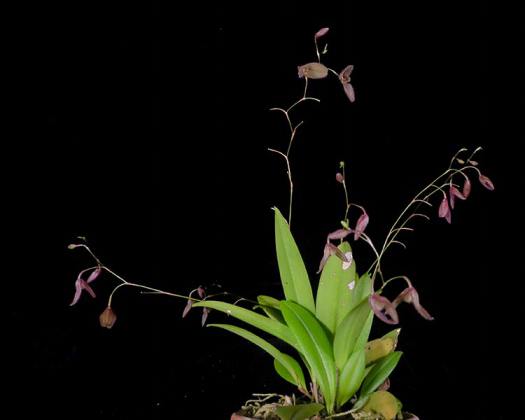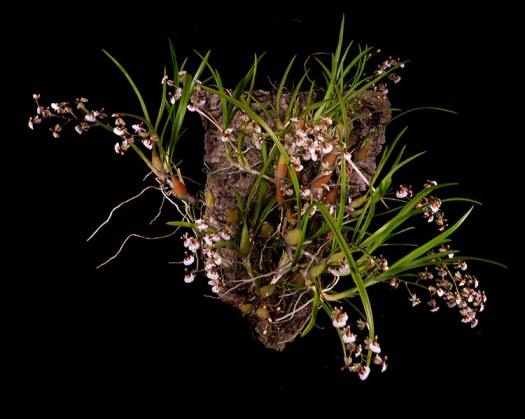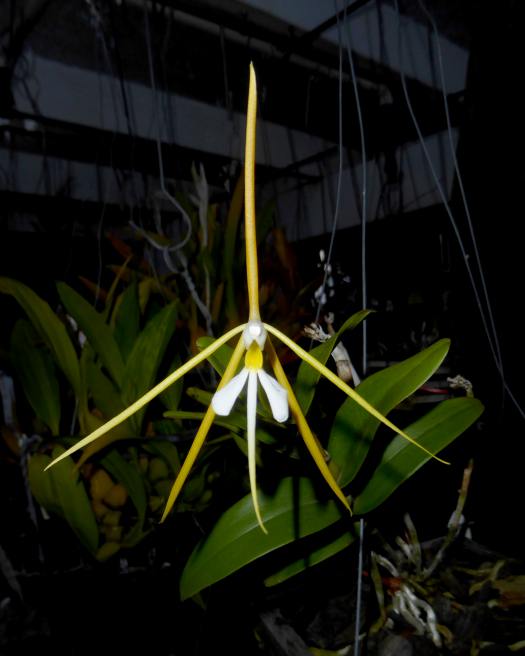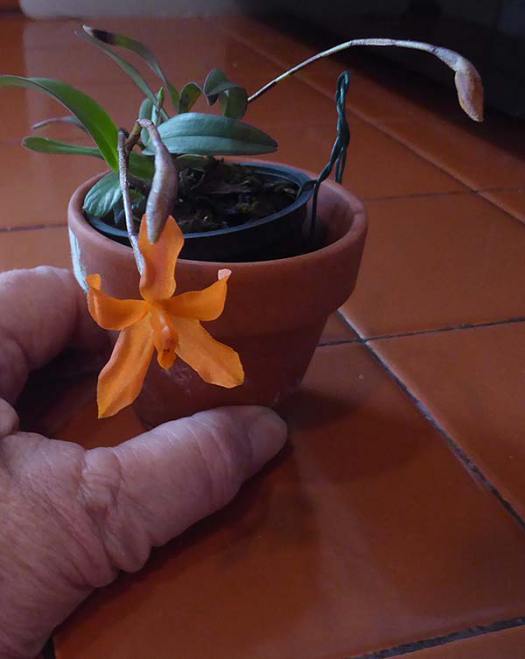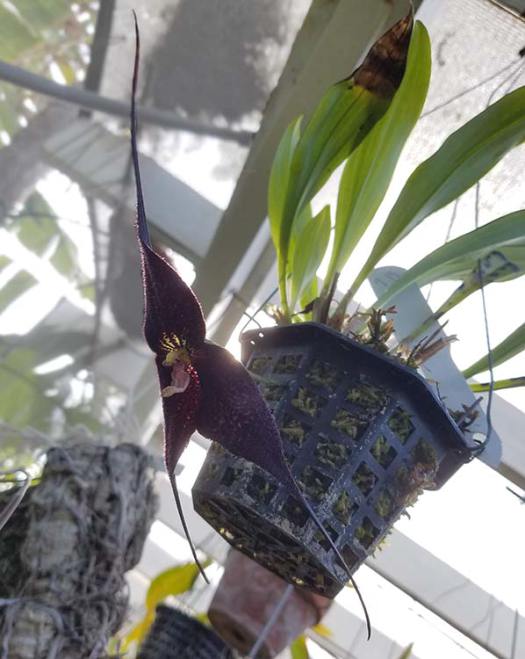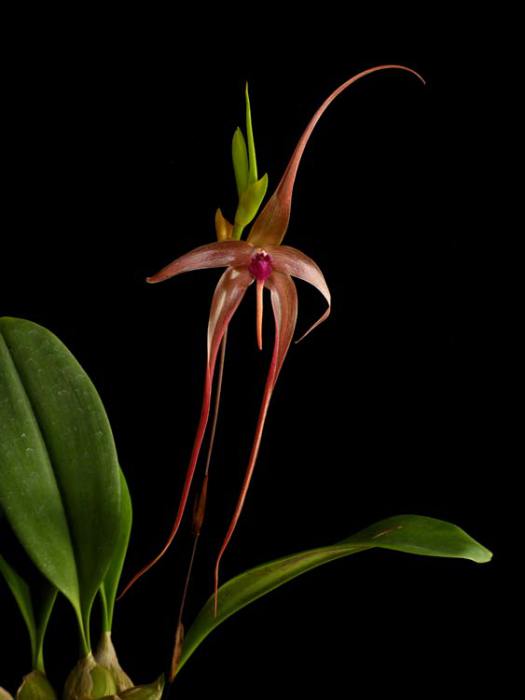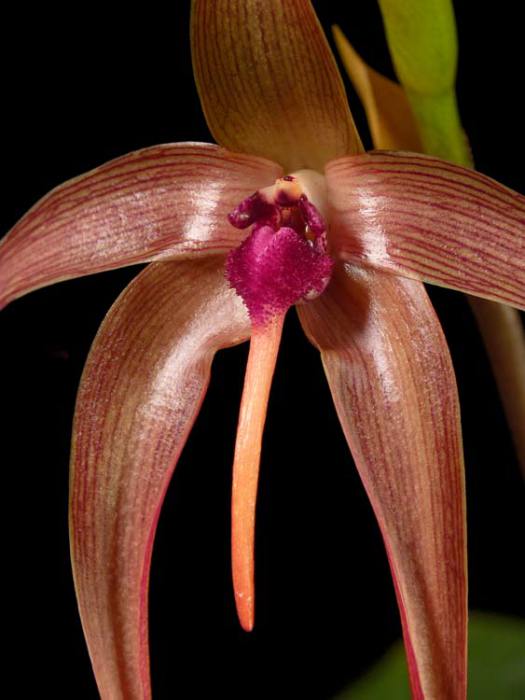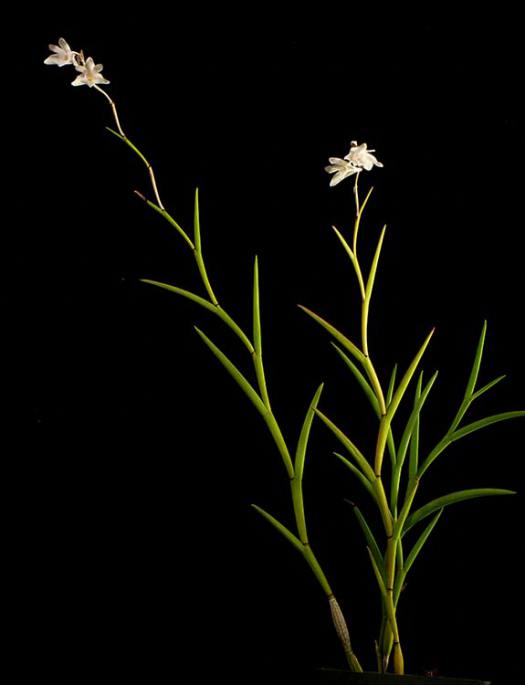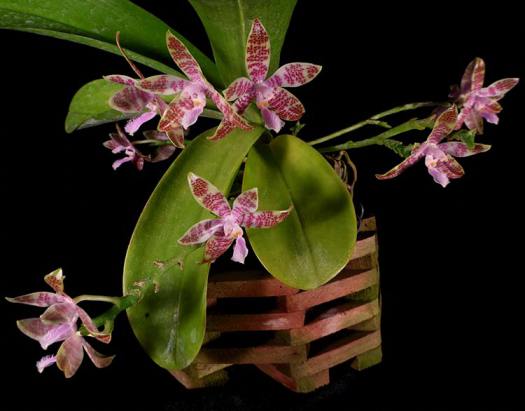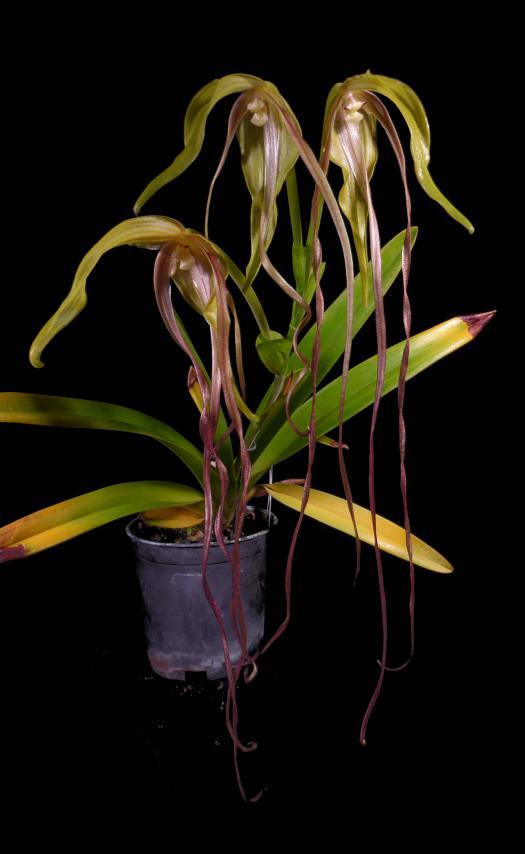September 2020
From Cheryl DiDonna:
|
|
Brassavola cucullataThis species can grow either outside (coastal) or in a bright indoor area. It is fragrant at night. |
|
From Glenda Urmacher: |
|
Maxillaria valenzuelanaGot it on Maui 2 yrs ago, it grows fan like with each new growth in front or in back. I water it along with all my other orchids growing in my greenhouse master bathroom. Fertilze it when I do the others, whatever I have on hand. I am moving all to the bromeliad gazebo I just built. They seem to like it shady, warm, and humid. Have to keep an eye on it when it sometimes freezes on the (Palos Verdes) peninsula. |
|
From Scott McGregor:
|
|
Arundina graminifolia (bambusifolia)I grow this supposedly “warm to hot” terrestrial species just fine outside, after seeing it growing at high elevations in Hawaii. Today, my first flower for the summer opened and it has a guardian angel! |
|
Cleisocentron gokusingiiOne of only a few orchids I consider really “blue” (beside Thelymitras and Dendrobium parvulum). The flowers are just beginning to open and I should get a good flush bloom on a large plant (will send a follow-up pic). The “blue-ness of the flowers seems to vary in different years—I’m wondering if it might be pH-related like Thelymitras and Hydrangeas? The color has not been edited in any way. |
|
Lockhartia oerstediiLockhartias have braided leaves, which make them attractive plants even when not in bloom. The yellow, Oncidium-like 1” flowers are borne serially, several at a time at the end of each cane, over 4-5 months in the summer. |
|
Dendrobium phloxClosely related to D. subclausum, and widely confused as there are many varieties of these species from Papua New Guinea. Long gangly canes with bright orange/yellow flowers at various times of the year on leafless canes. |
|
Prosthechea (Encyclia) vitellinaOne of the most fully-saturated orange-red flowers—this one likes it cool, moist and bright. By the way—most consumer cameras are deliberately adjusted to over-emphasize red/warmth in pictures so face pictures are more pleasing, and this flower will often over-saturate the camera and lose detail. See the second pic (right) of the same plant taken with an old consumer camera. Sophronitis flowers often have the same issue. |
|
Eulophia speciosaA new species for me (thanks, Roberta!) blooming for the first time. Like E. petersii in its desert habitat, but much prettier flowers. |
|
Meiracyllium trinasutumA mini that stays compact and can be grown into a specimen plant on a mount. 1” magenta flowers that smell of cinnamon. I wish I could figure out how to get this species to “flush bloom”. Instead, it blooms continuously albeit a bit sparsely all summer. |
Neobenthamia gracilisThis tall, bamboo-like orchid from Tanzania has large, clover-like, fragrant balls of flowers. I had been growing it under bright light in a relatively small pot, but after seeing some spectacular specimens from others, will move it to a large pot, terrestrial mix and full sun. |
Phymatidium tillandsioidesIs it really an orchid or is it a mini tillandsia? Did I really pay $28 for this? If you have this species and can get a better showing, let me know your secret! Had it for 3 years and it grows well enough, but.. |
|
 |
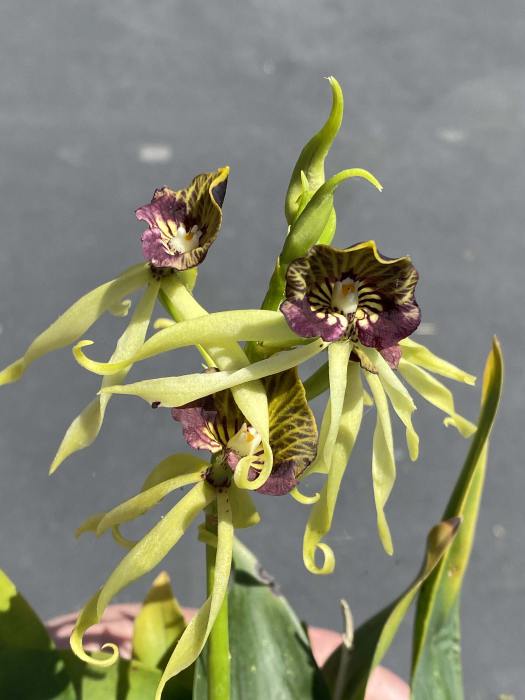 |
Prosthechea (Encyclia) cochleataNot the prettiest flower, but easy to grow and a large plant is almost always in bloom! |
|
Trichoceros onanensisBug-like flowers that open sequentially over several weeks. The leaves are green on top and have dark purple undersides. |
|
Neofinetia (Vanda) falcata 'Suruga Fukurin'
|
|
From Roberta Fox:
|
|
Outside in the Back Yard: |
|
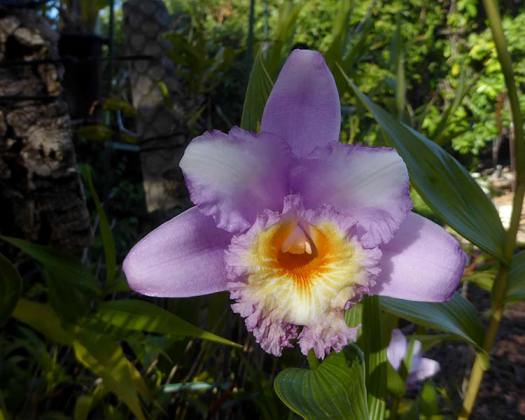 Sobralia violaceaI obtained this plant, bare root, several years ago. It took awhile to establish, but seems to be doing very nicely now. The plant is about 5 1/2 feet tall. This year produced the best blooming I have had, with 4 flowers open simultaneously. Alas, the flowers only last a day or so, but new flowers are produced sequentially. I grow this in filtered sun/bright shade. It also seems to do better since I started using RO water. |
|
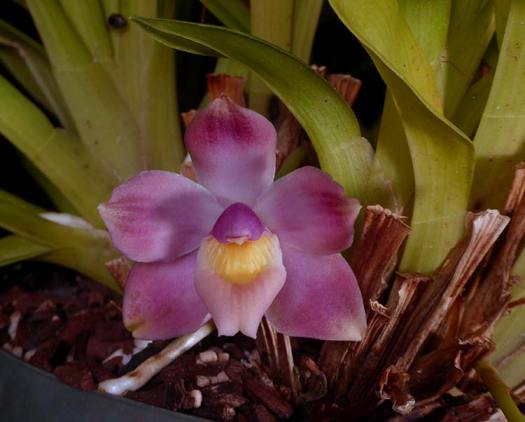 Pescatorea (Bollea) ecuadoranaThe flowers tend to hide at the base of the plant. Some are tucked within the plant, but there were plenty to see. Flowers are almost waxy. It grows in bright shade, and doesn't seem to care about water quality. |
|
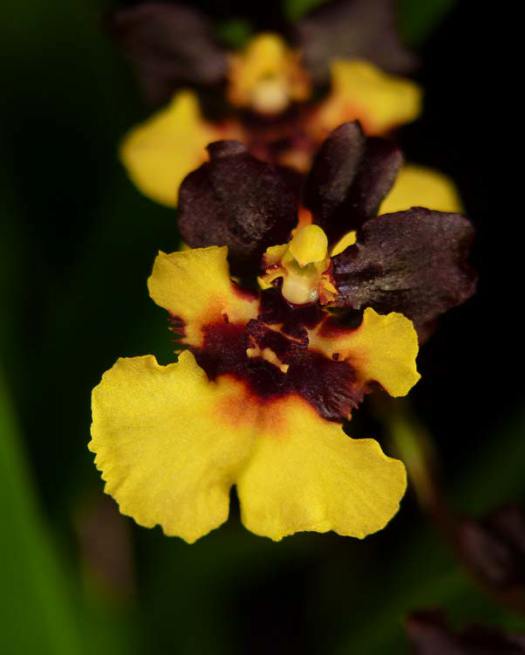 |
|
Gomesa croesusThe plant is very compact (3 or 4 inches), with lots of 1 inch flowers. I love the striking color contrast. |
|
Scaphosepalum gibberosumFlower is quite large for the genus - the natural spread is about 3 inches, the lip is about 2 inches. Each inflorescence produces flowers sequentially for many months, even more than a year. So don't cut spikes unless they are brown and definitely dead. |
|
.jpg) |
|
Masdevallia floribunda and Masdevalia sp. (purple floribunda type)These are among the easiest Masdevallias to grow, since they are more tolerant of heat than most of the genus. They do appreciate pure water. Flowers aren't large, but there are lots of them. |
|
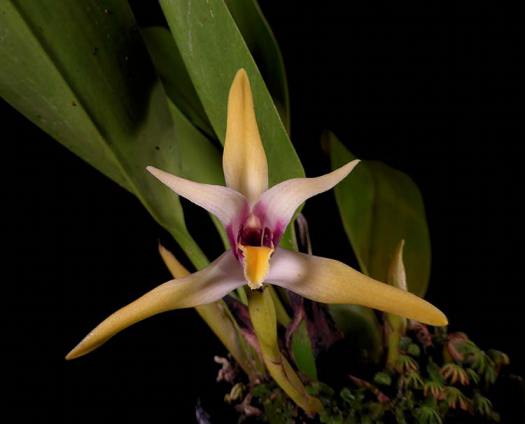 |
|
Maxillaria dilloniiWaxy flowers emerge from the base of a robust plant. |
|
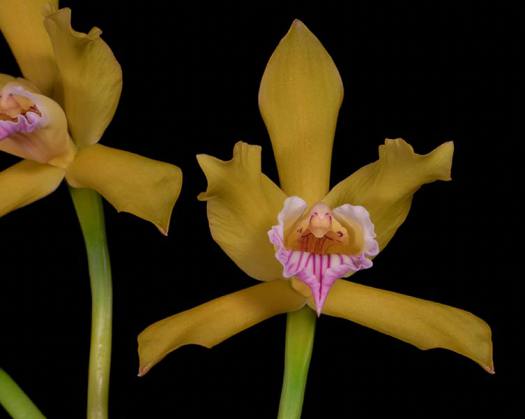 Cattleya (Laelia) xanthinaThis looks like a smaller version of Laelia grandis. It grows in filtered sun. |
|
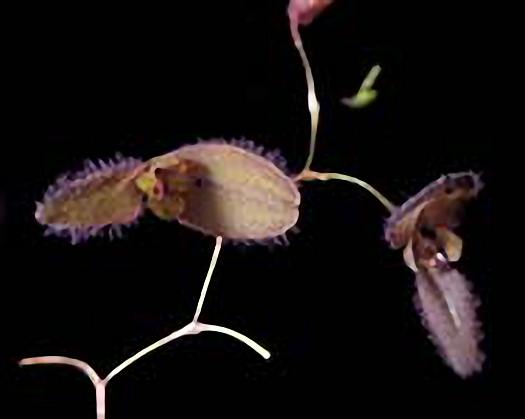 |
|
Stelis kefersteinianaAt first glance, neither this little plant nor its flowers are particularly impressive. But it is very floriferous, and viewed up close, the flowers are quite fascinating. Each inflorescence will produce many flowers sequentially. |
|
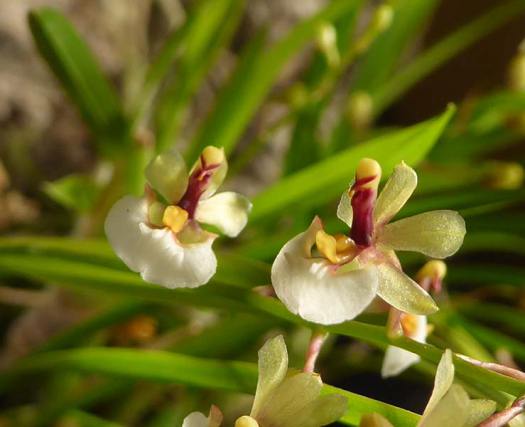 |
|
Ornithophora (Sigmatostalix, Gomesa) radicansFlowers make up for small size (about 1/4 inch) with prolific quantity. Ornithophora is a monotypic genus, but now has been lumped into Gomesa. The name of the origanal genus means "Bird bearing" and a close look at the flowers explains it all. |
|
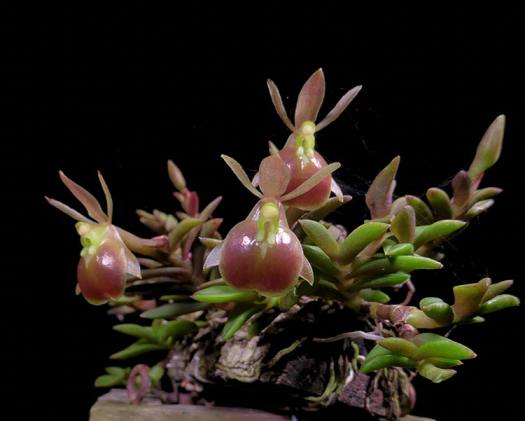 |
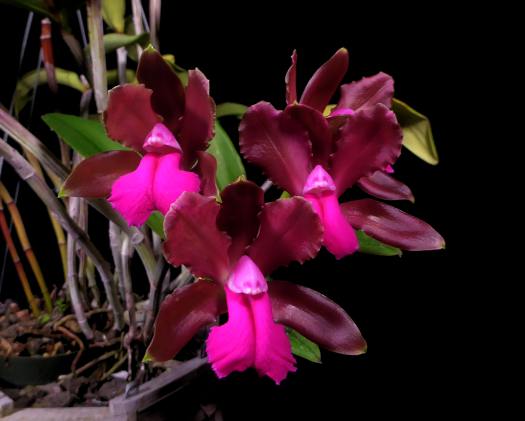 |
Epidendrum gnomusClosely related to Epi. porpax, flowers are a bit larger. The mount is horizotal, and it seems to grow well that way. |
Cattleya bicolorThe color saturation of the lip makes it seem to glow in the sun. There is considerable color variation within the species, ranging from brown to bronze to green, always with that brilliant lip. |
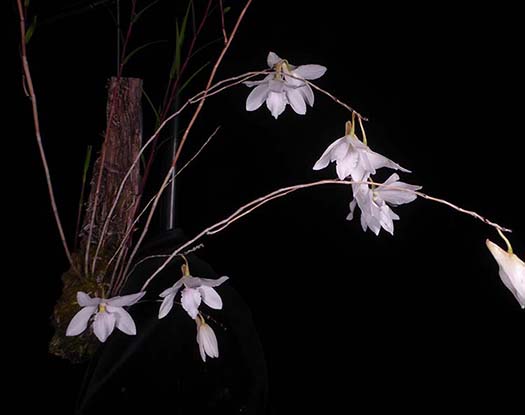 |
 |
Dendrobium papilio (small flower form)This species has a large flower form (I'm looking for one) which has fewer flowers but much bigger. This is the floriferous small-flower form. The flowers float from impossibly-thin, leafless canes. |
|
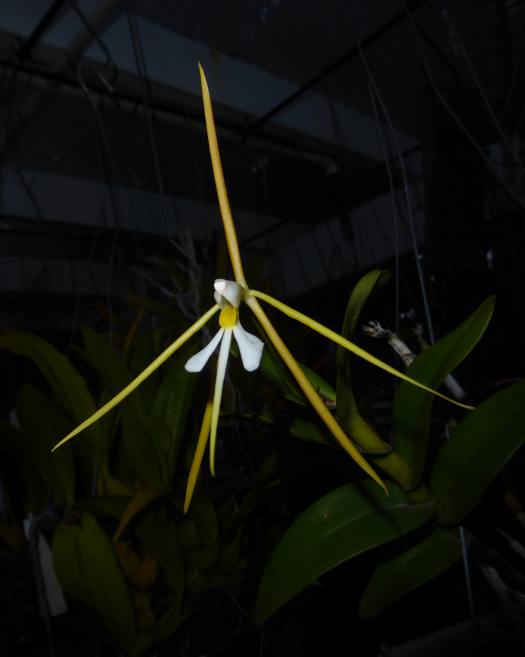 |
|
Epidendrum nocturnumThis species has an enormous range. I have seen it in Ecuador at moderate elevations, on the Rio Negro in Brazil in the Amazonian tropics, and it also grows on my patio through southern California winters, which indicates that it can grow at higher elevations. It is fragrant, particularly at night. |
|
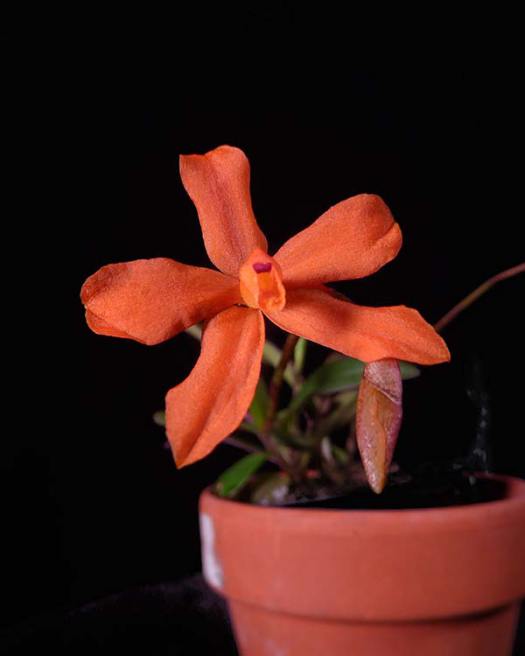 |
|
Neocogniauxia monophyllaA miniature plant with a large flower and larger name. It comes from the Blue Mountains of Jamaica. Flower is about 3/4 inch to 1 inch, leaves maybe an inch and a half. It grows shady and damp (but well drained). It is in a little basket with small bark, placed in the clay pot both for evaporative cooling and stability. Pronounced Neo-con-e-o-e-a. |
|
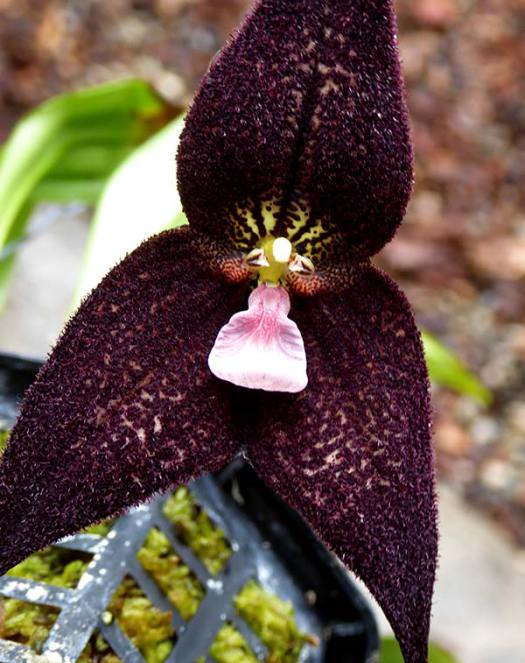 |
|
Dracula roezliiThe plant just keeps pumping out flowers. It can produce several sequentioally on a spike, and then produce mroe spikes. The warm weather does not seem to slow it down, but the flowers are at their best first thing in the morning. The photo on the left is what I see when I visit my orchids with coffee in hand. The flowers droop in the heat of the day, to open flat again the next day. |
|
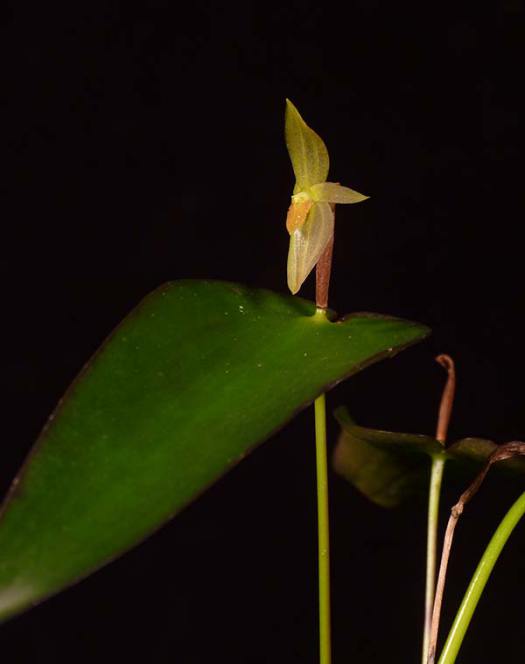 |
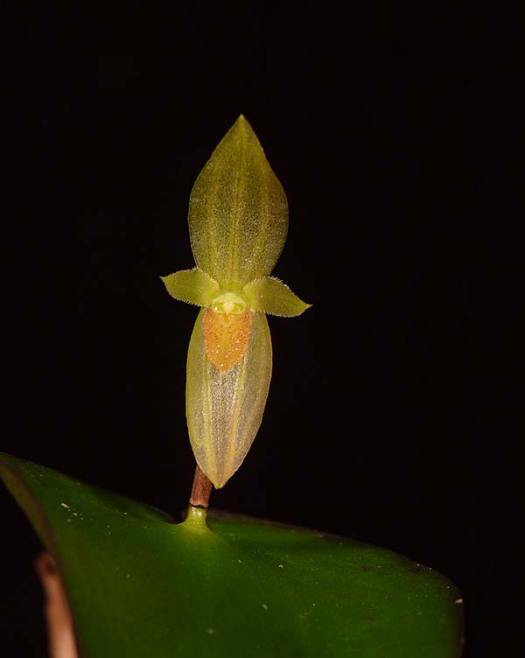 |
Pleurothallis radulaThe inflorescence produces flowers sequentially, popping out above the leaves. It grows shady and damp. |
|
 |
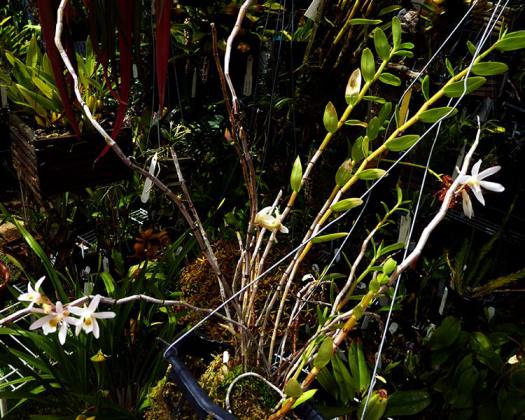 |
Dendrobium xichouenseFlowers area produced on totally bare, dead-looking canes. The flowers aren't large and showy, but the hairy lip is quite charming. It can bloom several times a year. I don't particularly dry it out in winter since it still has some leaves, and that certainly does not inhibit blooming. |
|
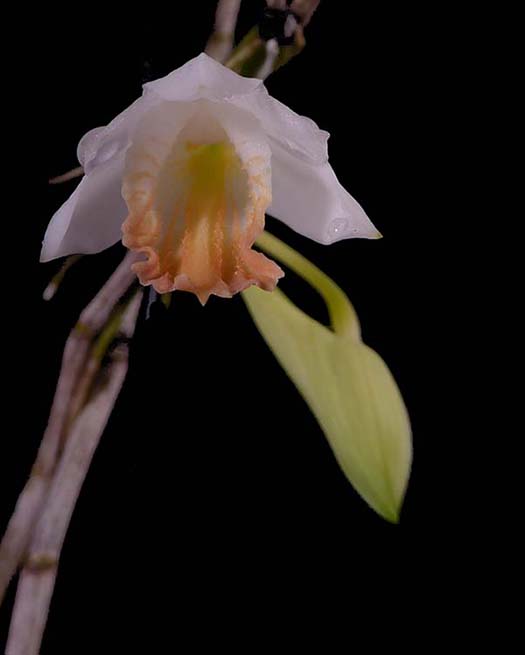 |
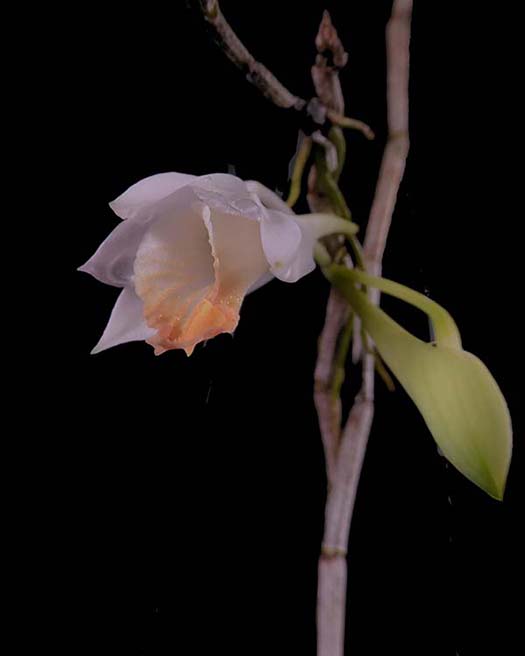 |
Dendrobium chapaenseI got this plant last year at Fascination of Orchids, a rather scrawny, mostly leafless, bare-root little thing. It seems to have made the adjustment to life at my house. The lip is particularly attractive. |
|

Dendrobium farmeriStill a young plant in a 4 inch pot, this is its first bloom. The segments are very light yellow, becoming lighter as the flowers age. The lip is lightly fringed. Fried eggs, anyone? |

Miltoniopsis vexillariaIn general, I have a poor success rate with Miltoniopsis, either hybrid or species. Most seem to want a temperature range of around 50 deg F. to 80 deg F. Of course our weather gets colder and warmer than this narrow range. However, this species seems to be more tolerant of our weather extremes than most of the genus. |
In the greenhouse... |
|
Bulbophyllum echinolabiumIt doesn't smell very good, but isn't too strong, and its beauty makes up for the aroma. These gigantic flowers only last a few days, but it blooms sequentially, about every 4-6 weeks, for several months. It produces a new spike or teo about twice a year. |
|
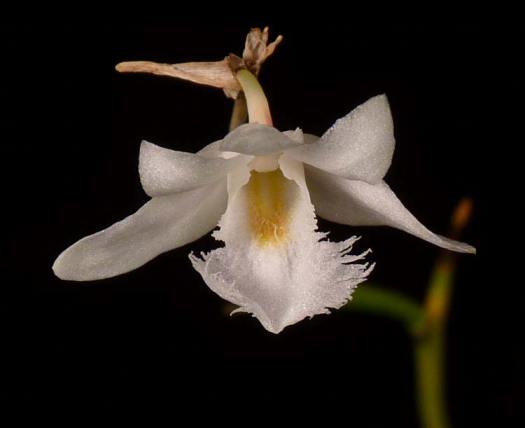
Den equitansThis species blooms intermittently all year, occasionally producing a flush bloom of several flowers simultaneously. Flowers are short-lived. The plant itself is interesting, with succulent, narrow leaves. A growth can continue to bloom even when it starts to turn yellow with age, only stopping when it completely dries out. |
|

Habenaria medusaThis plant just keeps getting better, producing more tubers. After blooming, it dies back. During dormancy it wants to be drier, but not bone-dry. I water it occasionally (every two weeks or so) during dormancy, then start watering more in approximately March to initiate the growth cycle. |
|
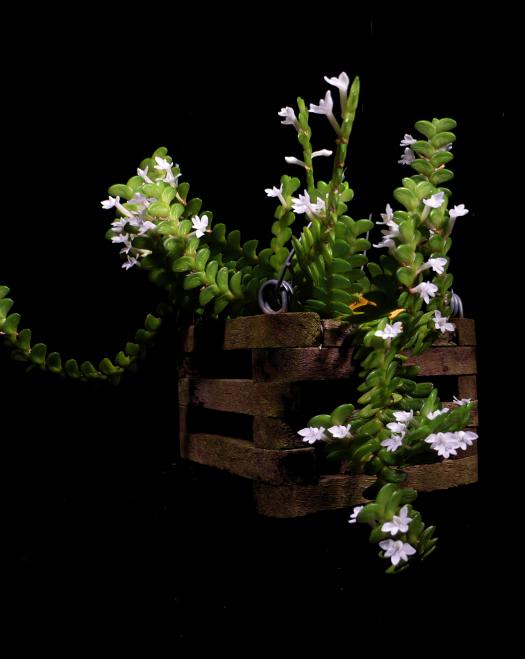 Angraecum distichumAs the growths get longer. I have found that I need to hang it up so that they can hang naturally. This was a particularly nice blooming. |
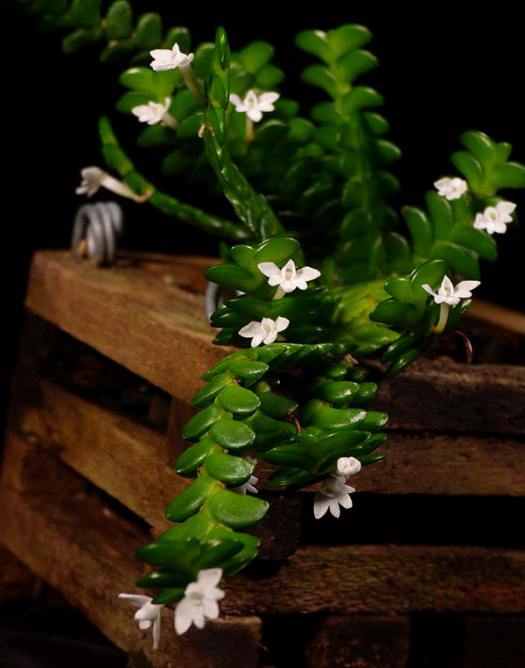 |
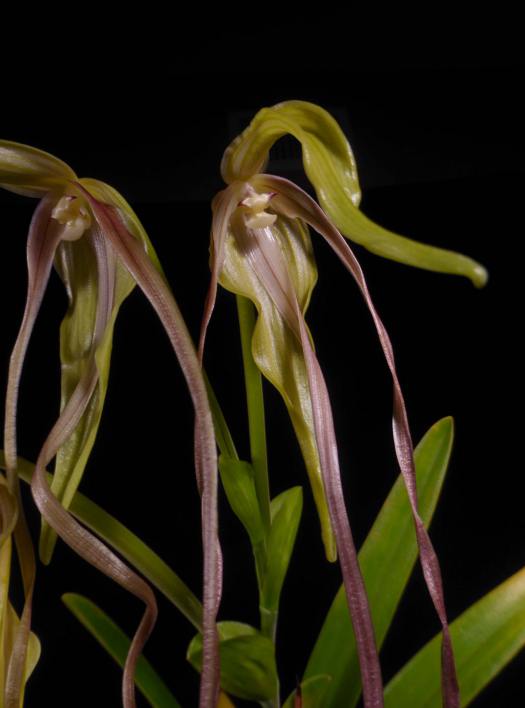
Phragmipedium lindeniiThis is a strange Phrag, with a third petal instead of a pouch. It's not a mutation, that's just what the species does. |
|

